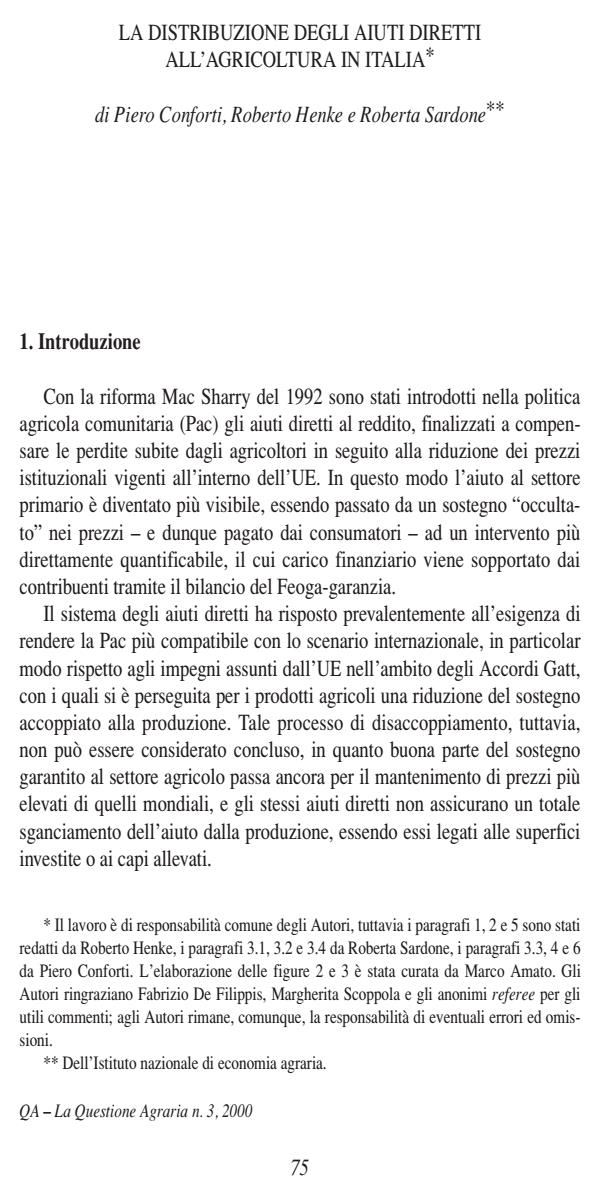La distribuzione degli aiuti diretti all'agricoltura in Italia
Journal title QA Rivista dell’Associazione Rossi-Doria
Author/s Piero Conforti, Roberto Henke, Roberta Sardone
Publishing Year 1 Issue 2000/3
Language Italian Pages 33 P. File size 129 KB
DOI
DOI is like a bar code for intellectual property: to have more infomation
click here
Below, you can see the article first page
If you want to buy this article in PDF format, you can do it, following the instructions to buy download credits

FrancoAngeli is member of Publishers International Linking Association, Inc (PILA), a not-for-profit association which run the CrossRef service enabling links to and from online scholarly content.
The Distribution of Direct Income Support to Agriculture in Italy - Direct income support has become a key tool of the Common Agricultural Policy (Cap), accounting today for over half of EU expenditure on agricultural market support. Its introduction has significantly affected the net contribution of member states in the Cap budget, widening the gap between Northern and Southern European countries. The role of direct support has been further enhanced by the Agenda 2000 reform, which has allowed Member States to modify distribution in order to promote environmental cross-compliance and greater equity. The paper analyses the distribution of direct income support in Italy on the basis of data collected by Aima through the administration of payments, and through the Italian Farm Accounting Data Network (Fadn). The results show that just a few farms get high unit payments while a host of very small farms get low unit and total payments. In the case of the Italian regional areas, the asymmetry of distribution is partially reduced if payments are weighted for the contribution each region makes to the national gross agricultural product. Distribution among Provinces shows coastal flatlands as the areas where payments are highest. The Central and Southern Italian regions receive more direct payments in proportion to their relative contribution in terms of national production, while the opposite is true for the Northern regions. A similar picture emerges if we compare the share of direct income support in each of the regions to their relative contribution to the EU budget flowing through their contribution to Italy’s Gdp. On the national scale Fadn data indicate that, on average, direct payments are mainly absorbed by the larger and more capital-intensive farms, which are also the farms where the incidence of payments on gross income is highest. Uneven distribution of support still appears a basic feature of the Cap, despite the changes that occurred over the 1990s - just one more piece of evidence revealing the basic weakness of the Agenda 2000 reform.
Piero Conforti, Roberto Henke, Roberta Sardone, La distribuzione degli aiuti diretti all'agricoltura in Italia in "QA Rivista dell’Associazione Rossi-Doria" 3/2000, pp , DOI: